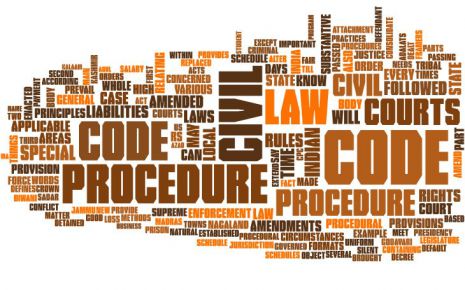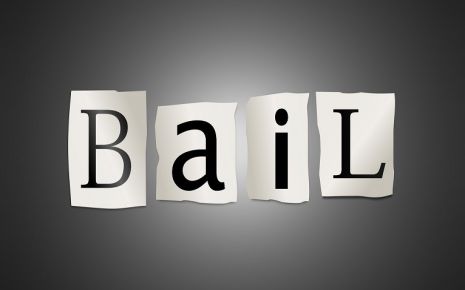Restorative Justice In Social Context
Restorative justice is not a new concept as it is embedded within our countries
traditions from ancient days in delivering not only the justice, but also puts
back the person to the same position in conducting political and governmental
activities in our country but after the arrival of British in our country this
system was changed into a opposite retributive justice system and followed
still.
Retributive system plays a important role as a repairing mechanism by understanding the causes and responding to harm caused through a conference between both the parties i.e between the victim and acquist
Introduction
Restorative justice refers to a way of responding to crime, or to other types of wrongdoing, injustice or conflict, that focuses primarily on repairing the damage caused by the wrongful action and restoring, insofar as possible, the well-being of all those involved[1].
Restorative justice put back the person to their original position rather than giving punishment as a only consequence .our laws are mainly focused in punishing only the criminals/acquiesced, the voices of victims goes unheard , Thus restorative justice plays an important role in placing the victim to interact with the accused through a counsel by responding to the needs of each individual parties
In our country the state plays a important role by replacing the victim with itself where the crime caused is considered against the law and whole state but the originally affected party i.e the victim is not given place to express their feelings and come to a point , but this concept of Restorative justice the crime is done against an individual so that individual should be given sole importance rather than the state which displays itself as a major victim
When a wrongful act occurs, individuals and the society feel violated. It causes damage to the relationships which is important and the central focus of restorative practices is to address this issue. When relationships are strong, people live a fulfilled life, and communities would be a better place to live without any issues . Thus a relationship sustains when one admits the flaws and accept to repair the harm done .
Respect:
Respect is considered to the most important ingredient in Restorative process.It is very essential that every person in this process should be treated equally and respectfully .Restorative process requires deep listening to respect the perspective of other person . The aim is to listen to what others say and express ,though we might disagree with their thinking we can be respectful and try hard to comprehend how it seems to them.
Responsibility:
For an effective restorative process their should be a strong personal responsibility. Every person should take responsibility for the harm caused even though the harm is unintentional . Taking responsibility also shows the willingness to explain the cause of that harmful behavior. Everyone should take responsibility for his or her own behavior which
has impact on a particular individual and in a society as a large.
Repair:
The Restorative mechanism is to repair the harm caused .when the person accepts the harm caused and when they take responsibility for their behavior and they have heard in the restorative process about how others were harmed by their action, they are expected to make repair. This helps us to put aside the thought of punishments and revenge .It is through taking responsibility of one's behavior and making reparative steps to solve the problem to maintain a smooth and harmonious relationship.
In the case of Sanjeev Nanda[6] , the court held that where the accused ran over three policemen and 6 others , the sentence of the convict is reduced to the time he served in jail and 2 years of community service.
In Manohar Singh V state of Rajasthan [7]
In this case the Supreme Court held that section 357 of CrPc is to make sure that the interests of the victims should be taken into consideration , as sometimes the situation so bad as it makes no sense in keeping the accused in the prison in such circumstances the accused shall be asked to pay compensation for the victim to make sure that the justice is served.
According to Braithwaite's shaming theory, which involves community acknowledgment and condemnation for the wrongful act which is followed by forgiving the offender for their action and reintegrating them again with the society ,as shaming should be only for reintegration and not for stigmatizing the individual [10].
Conclusion:
Restorative justice is rooted in our Indian history but this system was changed to retributive after British arrival, In restorative justice the victim is given importance to put forward their feelings and the Accused is also given a chance to reform without being left behind with a black mark in the society.
Sometimes the interaction of victim with the offender might result in the change of the character of the accused and pave them a way to reform and learn from the pain caused, In India the victim in many circumstances placed in the role of witness, Thus Restorative justice aims at protecting the interest of the Victims and express their voices ,by the reparative,reconstructing mechanisms.
End-Notes:
Retributive system plays a important role as a repairing mechanism by understanding the causes and responding to harm caused through a conference between both the parties i.e between the victim and acquist
Introduction
Restorative justice refers to a way of responding to crime, or to other types of wrongdoing, injustice or conflict, that focuses primarily on repairing the damage caused by the wrongful action and restoring, insofar as possible, the well-being of all those involved[1].
Restorative justice put back the person to their original position rather than giving punishment as a only consequence .our laws are mainly focused in punishing only the criminals/acquiesced, the voices of victims goes unheard , Thus restorative justice plays an important role in placing the victim to interact with the accused through a counsel by responding to the needs of each individual parties
What Is Restorative Justice:
"Restorative justice" is a process that involves as many people as possible who have a stake in a specific crime in order to "identify" and "address" harms, needs, and obligations in order to heal and make things right.[2]In our country the state plays a important role by replacing the victim with itself where the crime caused is considered against the law and whole state but the originally affected party i.e the victim is not given place to express their feelings and come to a point , but this concept of Restorative justice the crime is done against an individual so that individual should be given sole importance rather than the state which displays itself as a major victim
Relationship Between Restorative Justice And Social Justice:
- Restorative justice is more of a victim-centric approach compared to that of social justice, social justice focuses on punishing the accused as it is presumed that the crime is caused against the whole society.
- Both restorative justice and social justice aim to include the parties rather than excluding them.
- Both analyze the contextual forces that are affecting the parties and give a solution by involving the parties by hearing their side.
- Both analyze persons as not determined by events of their social background.
- Restorative Justice mainly grew out of minority cultural groups' desire to respond to problems in a way that fits better with their cultural traditions.
5 R's In Restorative Justice:
Relationship:When a wrongful act occurs, individuals and the society feel violated. It causes damage to the relationships which is important and the central focus of restorative practices is to address this issue. When relationships are strong, people live a fulfilled life, and communities would be a better place to live without any issues . Thus a relationship sustains when one admits the flaws and accept to repair the harm done .
Respect:
Respect is considered to the most important ingredient in Restorative process.It is very essential that every person in this process should be treated equally and respectfully .Restorative process requires deep listening to respect the perspective of other person . The aim is to listen to what others say and express ,though we might disagree with their thinking we can be respectful and try hard to comprehend how it seems to them.
Responsibility:
For an effective restorative process their should be a strong personal responsibility. Every person should take responsibility for the harm caused even though the harm is unintentional . Taking responsibility also shows the willingness to explain the cause of that harmful behavior. Everyone should take responsibility for his or her own behavior which
has impact on a particular individual and in a society as a large.
Repair:
The Restorative mechanism is to repair the harm caused .when the person accepts the harm caused and when they take responsibility for their behavior and they have heard in the restorative process about how others were harmed by their action, they are expected to make repair. This helps us to put aside the thought of punishments and revenge .It is through taking responsibility of one's behavior and making reparative steps to solve the problem to maintain a smooth and harmonious relationship.
Reintegration:
To complete this whole restorative process , the persons who were alienated must be accepted by the society to be a part of that society. The person should be given a chance through reintegration to work in a better position than before through acceptance of responsibility and repair the harm caused.This reintegration is the final step to achieve the completeness of the Restorative process .[4]Restorative Justice In India:
India in its adversarial system attests to the presence of Restorative Justice process in the Indian criminal justice system such as Lok adalat, panchayat system,arbitration, mediation etc. According to Indian criminal law system the accused is presumed to be innocent until proven guilty except certain circumstances,This aims at protecting the accused from allegations which can even be false in nature so that if the allegation is proved wrong the accused shall live harmoniously without any guilt which not only affects the accused but the family of the accused [5].In the case of Sanjeev Nanda[6] , the court held that where the accused ran over three policemen and 6 others , the sentence of the convict is reduced to the time he served in jail and 2 years of community service.
- Who have committed the crime?
- Which law has been violated?
- What is the punishment for the crime committed?
In Manohar Singh V state of Rajasthan [7]
In this case the Supreme Court held that section 357 of CrPc is to make sure that the interests of the victims should be taken into consideration , as sometimes the situation so bad as it makes no sense in keeping the accused in the prison in such circumstances the accused shall be asked to pay compensation for the victim to make sure that the justice is served.
Plea Bargaining:
Section 265A - 265L of CrPc contains provisions for Plea bargaining , the hectic lengthy process of prosecution will be reduced if the offender admits the wrong/guilt himself and their is a chance of lenient punishment .Arbitration And Conciliation:
The arbitration and conciliation act 1996 establishes different mechanisms such as Arbitration,conciliation and mediation . It enables the affected parties to participate and resolve their problems which is sometimes suggested by the court authorities with the help of Arbitrator, mediator etc. The courts in India also promote these mechanisms as these are less time consuming and done with the interaction of parties by putting forward their needs [8].Under The Juvenile Justice Act (2015):
Juvenile justice act 2015 was made to replace the 2000 act in order to implement high standards as provided by Beijing Rules, child rights convention,Hague convention on protection of children, etc.,This is evident from the preamble of Juvenile Justice act 2015[9].This act establishes many alternative sanctions such as community works, aims at social integration and Rehabilitation of Children who are in conflict with the law which is mainly based on individual care plans for the restoration of children with their family. Apart from the criminal justice model, this act aims at providing assistance for children who are in the growing age with high possibility of changing with the support of Juvenile Homes for Reformation Restoratively.According to Braithwaite's shaming theory, which involves community acknowledgment and condemnation for the wrongful act which is followed by forgiving the offender for their action and reintegrating them again with the society ,as shaming should be only for reintegration and not for stigmatizing the individual [10].
International Perspective Of Restorative Justice:
- The Vienna declaration about crime and justice talks about meeting the challenges of 21st century which advocated development of Restorative policies, procedures and programs respectful about the rights and needs of victims, offenders, communities and all parties [11].
- The August 2002, the UN economic and social council adopted a resolution by calling the members regarding the principles of Restorative Justice principles in criminal matters.
- The UN handbook on Restorative Justice mentions the features of Restorative Justice mechanism[12].
- A response that recognises the role of community as a prime factor in preventing and responding to the crime and causing factors.
- A response to crime where particularly juvenile offenders should be treated properly, teaching of new skills and values to be a part of society without isolation.
- The response of the crime should repair the harm caused to the fullest.
- The victims should participate and have a chance to express their sufferings and needs which should be fulfilled and repaired.
- Victim offender mediation programs in Czech Republic, the probation and mediation program are there during pre-trial and in court proceedings with the voluntary consent of the parties.
- Northern Ireland, New Zealand, Australia have universal access for young offenders whereas Norway and Belgium for all offenders regardless of age.
- In New Zealand it is compulsory for cases involving young offenders to be adjourned before sentencing to consider the suitability of Restorative Justice and then the process is taken into account, this includes the action which is taken by the offender or his family to compensate the victim according to their needs [13]. Restorative Justice is used during a deferred sentence after conviction and before sentencing (this is the model currently used in New Zealand).
- The state of Colorado in the United States has the best developed form of Restorative Justice, as the service could be seen from the initial stages and within the criminal justice system. They have a central body, the Restorative Justice coordinating council [14].
Conclusion:
Restorative justice is rooted in our Indian history but this system was changed to retributive after British arrival, In restorative justice the victim is given importance to put forward their feelings and the Accused is also given a chance to reform without being left behind with a black mark in the society.
Sometimes the interaction of victim with the offender might result in the change of the character of the accused and pave them a way to reform and learn from the pain caused, In India the victim in many circumstances placed in the role of witness, Thus Restorative justice aims at protecting the interest of the Victims and express their voices ,by the reparative,reconstructing mechanisms.
End-Notes:
- https://www.unodc.org/e4j/zh/crime-prevention-criminal-justice/module-8/key-issues/1--concept--values-and-origin-of-restorative-justice.html
- Winslade, John M. (2018) "Restorative Justice and Social Justice," Wisdom in Education: Vol. 8 : Iss. 1 ,Article 5.Available at: https://scholarworks.lib.csusb.edu/wie/vol8/iss1/5
- The 5 R's of Restorative Practice byBeverly B. Title, Ph.D.
- Akanksha Marwah, 'Restorative Justice and Reformation of Offenders'(2020)ILI Law Review 165.
- Sanjeev Nanda v The State Crl Appeal No 807/2008
- AIR 2015 SC 1124.
- Ajay Pal Singh, 'Restorative Justice and the Legal System: An Indian Perspective' (2021) 23 Supremo Amicus [600].
- Juvenile Delinquency - Restorative Justice ,Juvenile Homes Implementation Is The Onlyreform Written by Prof. Dr. Komal Audichya* & Sunil Tiwari**
- Reintegrative Shaming John Braithwaite
- Vienna declaration on crime and justice , 10 th United Nations conference on prevention of crime and treatment of offenders , Vienna 10- 17 April 2000
- The UN handbook on Restorative Justice mentions the features of Restorative Justice mechanism
- New Zealand Ministry of Justice, How Restorative Justice Works, https://www.justice.govt.nz/courts/criminal/charged-with-a-crime/how-restorative-justice-works/
- Restorative Justice Colorado, https://www.rjcolorado.org/about-us/restorative-justice-coucil/
Law Article in India
Legal Question & Answers
Lawyers in India - Search By City
LawArticles
How To File For Mutual Divorce In Delhi

How To File For Mutual Divorce In Delhi Mutual Consent Divorce is the Simplest Way to Obtain a D...
Increased Age For Girls Marriage

It is hoped that the Prohibition of Child Marriage (Amendment) Bill, 2021, which intends to inc...
Facade of Social Media

One may very easily get absorbed in the lives of others as one scrolls through a Facebook news ...
Section 482 CrPc - Quashing Of FIR: Guid...

The Inherent power under Section 482 in The Code Of Criminal Procedure, 1973 (37th Chapter of t...
The Uniform Civil Code (UCC) in India: A...

The Uniform Civil Code (UCC) is a concept that proposes the unification of personal laws across...
Role Of Artificial Intelligence In Legal...

Artificial intelligence (AI) is revolutionizing various sectors of the economy, and the legal i...








Please Drop Your Comments